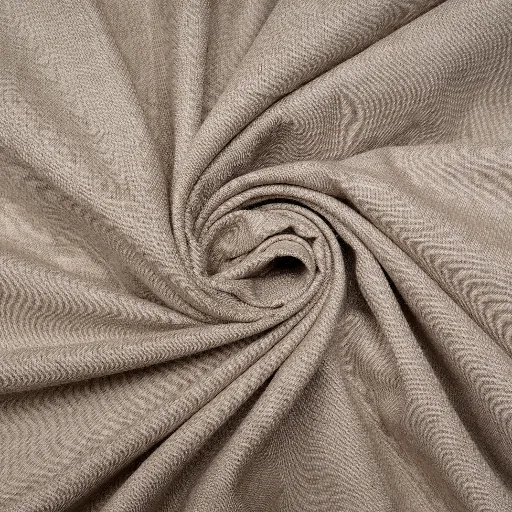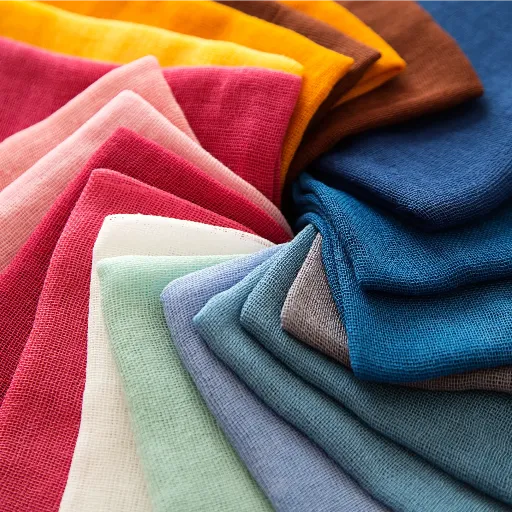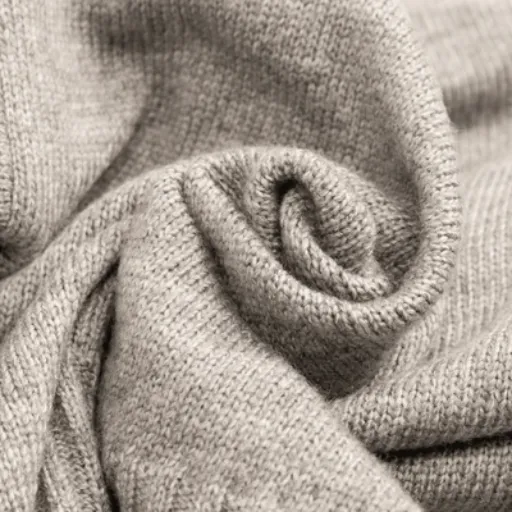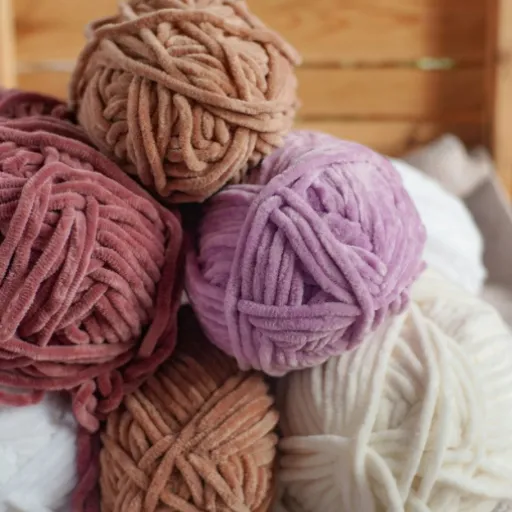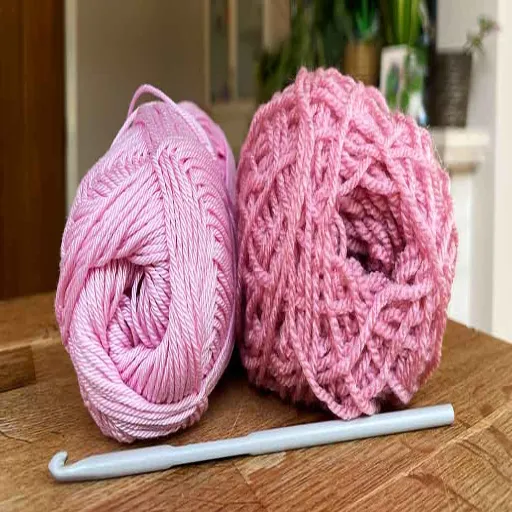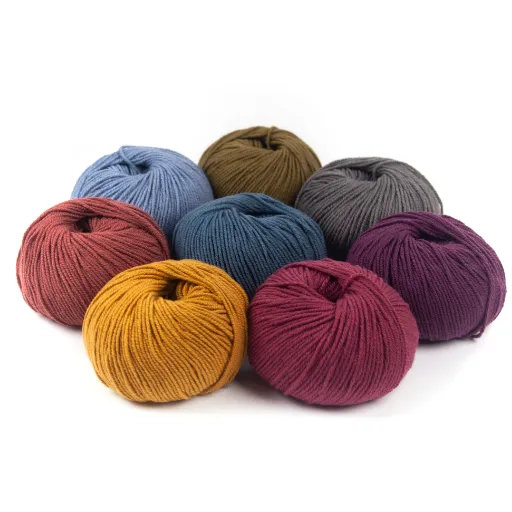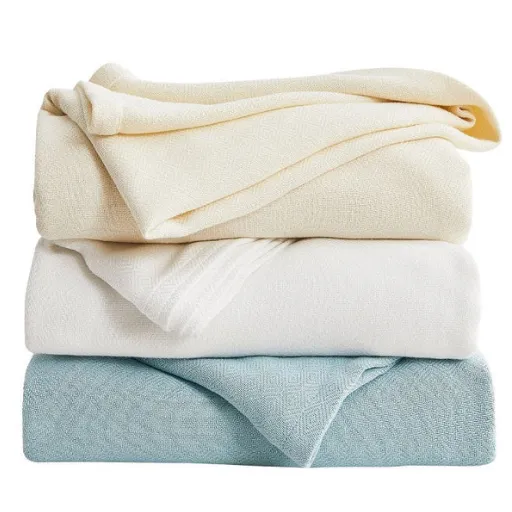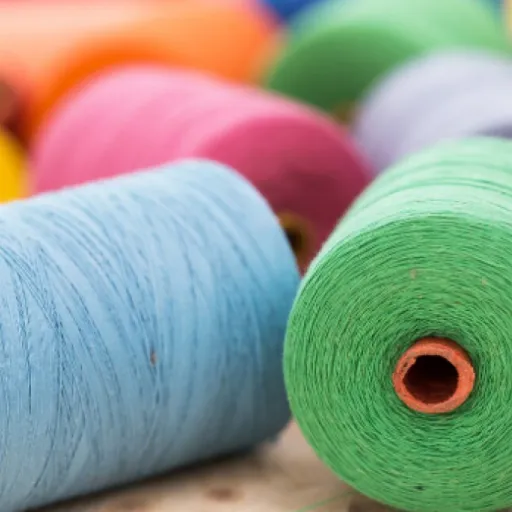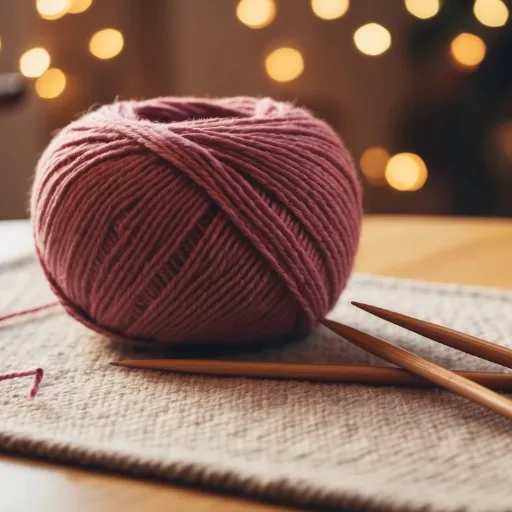Acrylic yarn is a synthetic fiber that has entered into the awning of the industry for versatility, cheap quality, and durability. The question goes on to ask what acrylic yarn really is made of and what distinguishes it from other fibers. This article will provide a detailed understanding of the composition and nature of acrylic fiber, revealing its high-functioning properties and uses. Whether you are an experienced crafter, a textile enthusiast, or simply curious about how this material is made, this detailed exploration will provide some insights. We will look into the composition of the acrylic yarn as well as its applications, for which it is considered a very important material in contemporary fabric technology.
What is an Acrylic Yarn?
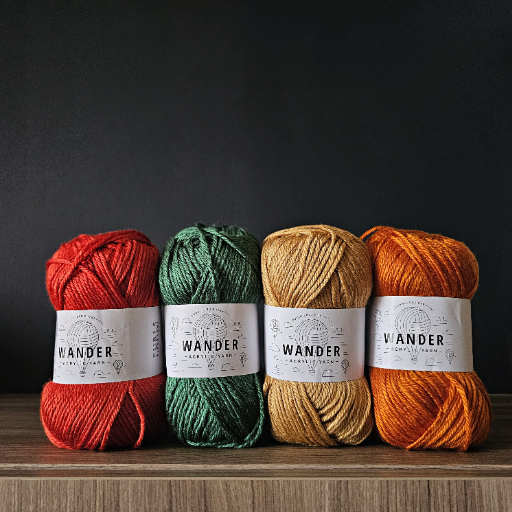
Acrylic yarns are fiber synthetics composed of “polymer” polyacrylonitrile, which in turn derives from petroleum or natural gas. They are lighter in weight than wool; almost as soft, warm, and smooth; and polymerization and dyeing processes on acrylic fiber add color and allow higher durability at a lower cost. Acrylic yarns shrink less, fade less, and stain less; it is considered good for craft work, garments, and home furnishings. It is easy to care for since it can generally be machine-washed and dried.
Definition and Composition of Acrylic Yarn
Acrylic yarn formation starts with a fairly complex manufacturing process, beginning with acrylonitrile polymerization. The acrylonitrile monomers are joined together with other comonomers with aim of improving dye affinity and performance characteristics. The polymer is dissolved in a solvent, and spun from this viscous solution through a spinneret. Depending on the manufacturer and the properties needed for the end product, the fibers are then solidified by a wet or dry spinning process.
After wet or dry spinning, the fibers will pass through other processes whereby they are stretched and crimped, which exerts strength and elasticity onto the fibers and creates certain characteristics with respect to texture, which will then be heat-set to stabilize these characteristics in their final form. The heat-setting process also stabilizes the form of the fibers so that they maintain their flexibility and resilience required at the later stage of spinning into yarn. Due to their synthetic origin, acrylic fibers may further be developed with a number of specialized performance features such as enhanced UV resistance, improved moisture management, or flame retardance depending upon the application. This flexibility combined with the competitive price of manufacture has made acrylic yarn into a very powerful resource in the world of textiles.
How is Acrylic Yarn Made?
The production of acrylic yarns commences with polymerization, wherein acrylonitrile, as the main monomer, chemically reacts with certain co-monomers to form the long-chain polymer. The polymer is then dissolved in a solvent to obtain the spinning solution. This solution is then extruded through a spinneret consisting of tiny holes to extrude the continuous filaments. The filaments are then solidified either by wet-spinning, where the filaments pass through a coagulation bath, or dry spinning, where evaporative techniques are used.
Once stabilized, filaments are drawn and stretched to orient polymer chains to increase tensile strength and elasticity. Further treatments may be applied to promote crimping for bulk and texture. Depending on their intended use, fibers are then either cut into staple lengths or kept as continuous filaments. The fibers are twisted or spun into yarn that is ready for dyeing and weaving applications. Such advancement in this process has been utilized to customize acrylic yarn further so that manufacturers could specify desired performance attributes for a variety of applications.
Characteristics of Acrylic Yarn
- Lightweight
Being much lighter in weight than wool and cotton, acrylic yarn bundles for use in lightweight apparel and accessories where a slim tote is desired.
- Soft Texture
The fibers themselves can be inspired by natural fibers to be soft to the touch, much like wool, making them suitable for use in blankets, sweaters, and baby clothing.
- Thermal Insulation
Notwithstanding the light weight feel, acrylic yarns are good insulators and warm well, and the thermal conductivity is generally in the range of 0.032 W/mK-0.040 W/mK, depending on denier and construction, similar to wool.
- Moisture Resistance
Acrylic yarn can dry out fast, thanks to its low rate of moisture absorption, which is 1%-2%, making it the best option to be used in damp environmental problems.
- Durability
Being a polymer, the acrylic resists deterioration by wearing and tearing, corrosion, and environmental effects. As per the very specific formulation, it has the tensile strength varying in the ranges from 200 to 400 MPa.
- Colorfastness
Because acrylic yarn retains dyes well, its colorfastness under various conditions is high. Colors remain radiant at least for a great period of time in the sun or when washed, scoring between 4 and 5 on the ISO scale for lightfastness.
These qualities make it that the acrylic yarn can be deployed as a balancing material that can fulfill all industrial and consumer needs with assurance of consistent quality and high performance.
Acrylic Yarn vs. Natural Yarn: What’s the Difference?
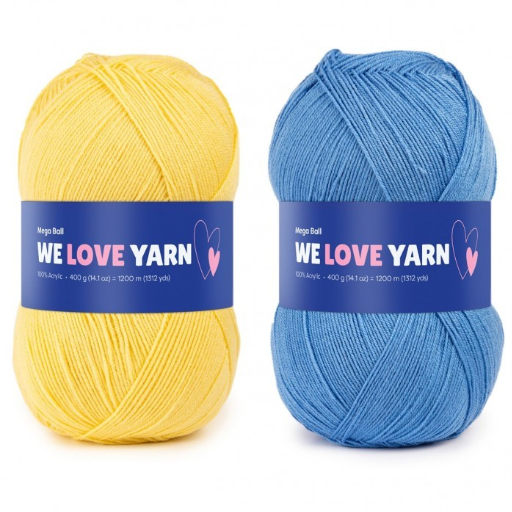
Comparing Acrylic and Wool Yarn
|
Key Point |
Acrylic Yarn |
Wool Yarn |
|---|---|---|
|
Source |
Synthetic fibers |
Natural animal fiber (sheep, etc.) |
|
Softness |
Typically smooth |
Often softer, varies by type |
|
Durability |
High resistance to wear |
Moderate, prone to pilling |
|
Warmth |
Moderate insulation |
Excellent insulation |
|
Moisture Absorption |
Low moisture-wicking ability |
Great moisture absorption |
|
Maintenance |
Machine washable, easy care |
May require special cleaning |
|
Cost |
Generally inexpensive |
Can be more expensive |
|
Breathability |
Limited |
Highly breathable |
|
Environmental Impact |
Synthetic, non-biodegradable |
Biodegradable, renewable resource |
|
Suitability |
Best for lightweight, daily-use items |
Ideal for winter clothing, blankets |
Benefits of Acrylic Over Natural Fibers
- Cost-Effectiveness
Compared with natural fibers such as wool and cotton, acrylic fibers generally fetch lower prices. According to market trends, the average price of acrylic yarn per kilogram is somewhere around 30%-50% cheaper than those of premium-class natural fibers, making it an economic pledge to both the manufacturer and the consumer.
- Durability and Strength
The acrylic has its tensile strength and resilience than other fibers; thus, it will suffer less wear and tear with time. Excepting the natural fibers, acrylic does not suffer weakening when wet, so the fabric is capable of long-lasting service during regular use.
- Moisture Resistance
The acrylic fiber has very low moisture absorbency so that it protects water and dries quickly. This ensures a comfortable wearer condition besides preventing mold or mildew formation, especially when formed in a humid environment.
- Lightweight Composition
Acrylic fiber is very light compared to most natural fibers. In fact, an acrylic sweater weighs about 20% to 30% less than a wool sweater, yet provides equal warmth.
When to Choose Acrylic Yarn for Your Projects?
Acrylic yarn is a good choice for projects needing durability, affordability, and easy maintenance. The fiber is eminently given its resilience and ability to sustain repeated washing without great deterioration to making garments or items for heavy or daily use, such as sweaters, scarves, and blankets. Also, it is considered if the weight of the project is a constraint for making such fine acrylic yarn products like baby clothes or travel blankets.
Being cheap and having a great variety of colors and weights from which to choose, acrylic yarn is advised for beginners, thereby allowing one to experiment without putting a lot of money down. To ensure comfort in outdoor environments subject to changes, acrylic yarns are considered the moisture-wicking and quick-drying types and are used while working on outdoor accessories like hats, gloves, or cushions. In addition, in long-term storage or in places that experience increased humidity, it stands out as a deterrent to those who might loot or destroy things.
Understanding Acrylic Fiber and Its Composition
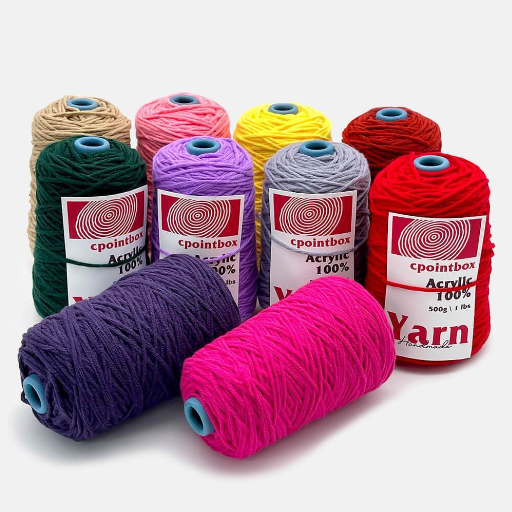
Acrylic fibers are synthetic fibers derived from polymer sources, with acrylonitrile as their main constituent and small amounts of compounds added to give them modifying properties. These fibers are produced by a wet spinning or dry spinning process for converting polymer solution into fibers; this material, being lightweight, soft, and warm, is thus mostly used as a substitute for wool. Due to its chemical constitution, acrylic fiber possesses an excellent resistance to water, fading, and abrasion, thereby providing durability and longevity to all its applications including crafting and making everyday textiles.
What is Acrylic Fiber Made From?
The fiber is a synthetic polymer called polyacrylonitrile. The polymer is derived from petrochemical sources such as crude oil or natural gas by way of polymerization. The material must be at least 85% acrylonitrile by weight to accord with industrial standards. Comonomers such as vinyl acetate or methyl acrylate may sometimes be introduced to improve flexibility, dyeability, and performance characteristics of the fiber so that it can be applied to a more versatile range of fabric types and applications. The whole production procedure is strictly controlled to ensure the quality and consistency of the end product.
How is Acrylic Fiber Different from Other Synthetic Fibers?
|
Key Point |
Acrylic Fiber |
Other Synthetic Fibers |
|---|---|---|
|
Composition |
Derived from acrylonitrile |
Includes polyester, nylon, etc. |
|
Texture |
Soft and wool-like |
Varies (smooth, silky, etc.) |
|
Moisture Absorption |
Low moisture absorption |
Generally low across all |
|
Thermal Retention |
Excellent heat retention |
Varies; some less insulative |
|
Dyeability |
High due to additives |
Depends on polymer structure |
|
Resistance to UV |
Good UV resistance |
Varies; some degrade in sunlight |
|
Cost |
Moderate |
Wide range, some cheaper |
|
Durability |
Highly durable |
Varies by fiber type |
|
Elasticity |
Moderate |
Nylon, spandex offer higher |
|
Common Uses |
Sweaters, blankets, upholstery |
Activewear, carpets, technical gear |
Choosing the Right Acrylic Yarn
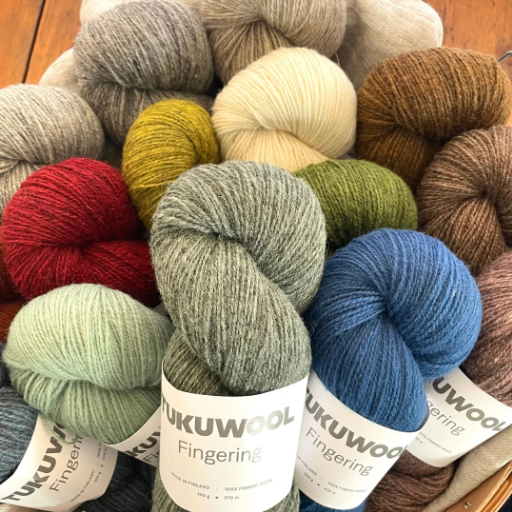
Acrylic yarns are selected based on use, texture, and durability requirements for any project. When making garments like sweaters or a scarf, always choose ones soft and lightweight enough to guarantee comfort and warmth. More durable yarns are used for something such as home décor or outdoor projects, opting for a more dense acrylic or acrylic treated in a special way for added strength and sturdiness. Also, check for its dye fastness and washing instructions to be ranked according to maintenance and aesthetic needs. If in doubt, always read the yarn label for any given specification, which will help make an informed choice: weight, recommended needle size, care instructions, etc.
Types of Acrylic Yarn Available
This variety consists of many acrylic yarn types serving diverse applications and differing in were they want to place their preferences. The more commonly used varieties include:
- Standard Acrylic Yarn: This is a very versatile yarn, cheaply bought, and widely used for most projects in knitting and crochet. It is considered light-weight, easy-care, and is suitable for any level from beginner to advanced craft person.
- Premium Acrylic Yarn: These are often much softer and more durable and mimic very well the feel of natural fibers such as wool or cotton. They should be wondered at in pieces requiring a little finer finish; garments or accessories might fit the bill.
- Blended Acrylic Yarn: These yarns often combine acrylic fibers with other materials such as wool, cotton, or nylon. The blending enhances properties that can make them more relevant for softening, stretching, or making them more durable for almost any kind of work that runs from wearables to home décor.
- Anti-Pilling Acrylic Yarn: It was developed to stay from pilling through use and washing, gifting your items with a neat look of forever, even being handled all the time, like blankets or baby clothes.
- Bulky or Chunky Acrylic Yarn: With a greater intumescence, this yarn is meant for the quickest creation and provides much warmth and texture. They are often used for making sweaters, scarves, and other winter necessities.
- Novelty Acrylic Yarn: Special constructions including variegated, self-striping, or textured yarns impart special visual effects to the projects, thereby mostly being suitable for the creative and statement pieces.
Get to know these types, and you have half your battle win in selecting the best acrylic yarn for the particular requirements of the project, which basically means performance and beauty.
How to Select Acrylic Yarn for Your Needs?
Several factors have to be considered when selecting acrylic yarn for a project, to arrive at an agreeable outcome. First is purpose: Destiny of yarn forming the yarn most suitable for the task. For instance, lightweight acrylic yarns with soft touches are great for scarves and sweaters; bulkier acrylic blends provide durability needed for blankets or rugs.
Then comes the weight of yarn, which is very important for the drape and texture of finished fabric. From super fine (for intricate lacework) intentionally to super bulky (used for quick projects wherein thick and warm materials are needed), there will be a crock of yarn weights. The number of ply is something else to consider, with higher counts generally denoting that the material is smoother and stronger.
Care and Maintenance of Acrylic Yarn
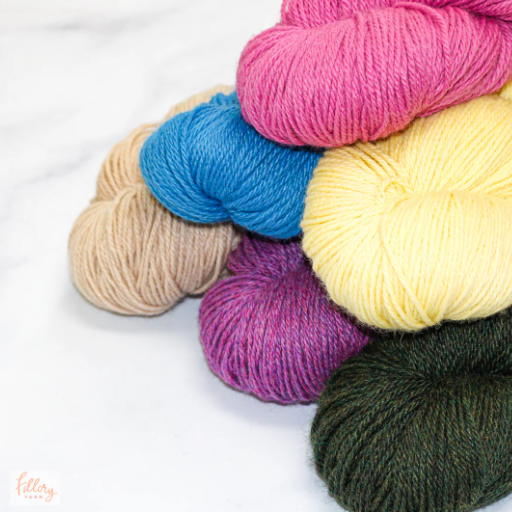
Where durability and low maintenance needs are concerned, acrylic yarn has been well appreciated for its uses. To ensure the longevity of an item and to maintain its good quality, adhere to the following instructions:
- Washing
Most acrylic yarns are machine washable. It is recommended to run a gentle wash cycle at either cold or lukewarm temperatures to avoid unwarranted distortion or stretching of the fibers.
- Drying
Drying by air should also be preferred to lend structure and softness to the yarn. If dry heat must be given, use a low setting to prevent any harm.
- Storage
Store acrylic yarn items in a cool and dry place, beyond direct sunlight, to avoid either fading or weakening of the fibers.
- Special Treatments
In case the label mentions anti-pilling or any other treatment, follow the manufacturer’s instructions on care for those properties. Additional care instructions can usually be obtained from the product label.
Washing and Drying Acrylic Yarn
In the world of yarn, acrylic yarn has earned a reputation for being the most durable. However, proper apt procedures of washing and drying make sure that the strength is maintained intact for quite some time. Most acrylic yarn items can be washed in the washing machine, but the stitch should preferably be kept in a gentle cycle with cold or warm water so as not to stress the fibers unnecessarily. Do not use any bleach or harsh detergent; these might destroy the structure as well as the color of the yarn. Use some gentle detergent meant for delicates or synthetics.
To dry items made from acrylic yarn, the best option is to air dry them to avoid any chances of shrinkage or distortion; however, dryers on the low setting can also be used if so indicated on the care label. Placing the item inside a mesh laundry bag while washing helps prevent stretching or snagging. It is best to lay the project flat on a clean, dry towel, reshaping it while laying to dry, so that it dries evenly once laid; this also retains the original shape of the piece. Following these instructions will greatly reduce the wear and tear of your acrylic yarn projects.
How to Store Acrylic Yarn Properly?
Proper storage is necessary if you want to retain the quality of acrylic yarn and its days of use. To begin, confirm that your yarn is clean and dust-free because dust can degrade fibers with time. From mold growth to color fading, a damp environment or one exposed to the sun directly can cause heating damage; hence, yarns should be kept in cool, dry places. Clear, airtight containers offer the very best in protecting yarns from any moisture or pests, including moths. If such airtight containers are not available, acid-free bags or bins with a tight lid will also work. Unwind the loose strands into neat skeins or balls to avoid tangling during storage. To further enhance organization, mark each skein with weight, yardage, and color code. This allows for ease in identifying the yarn when you need to use it later on. Following such a system for storing your acrylic yarn will keep the color bright and the yarn strong, always ready for your next exciting venture.
Reference Sources
-
Study on Acrylic/Wool/Angora Blends: This research explored the properties of yarns and fabrics made from blends of acrylic, wool, and Angora rabbit fibers. It found that blending acrylic with wool and Angora increased the variability in yarn thickness and imperfections.
-
Characterization of Acrylic Fiber Structure: This study characterized the fine structure of acrylic fibers using techniques like gas adsorption, density measurements, and electron microscopy. It identified a fibril-void structure in wet-spun fibers, which originates during coagulation and evolves through stretching and collapsing.
Frequently Asked Questions (FAQs)
Q: What is acrylic yarn made of?
A: Acrylic yarn is made from a synthetic fiber that is made from a polymer called polyacrylonitrile, which is derived from petrochemicals. This type of yarn is popular among crafters due to its affordability and wide range of colors.
Q: How does acrylic yarn compare to cotton yarn?
A: Acrylic yarn and cotton yarn are both popular types of yarn, but they have different characteristics. Acrylic yarn is synthetic and typically more durable and easier to care for, while cotton yarn is made from natural fibers, offering breathability and a softer feel. The choice depends on the specific knitting or crocheting project.
Q: Can I use acrylic yarn for sock yarn projects?
A: Yes, acrylic yarn can be used for sock yarn projects, but it’s important to choose a high-quality acrylic blend that has some elasticity. Many crafters prefer using yarns made from natural fibers for socks, but acrylic blends can be a good alternative for those seeking ease of care and durability.
Q: What are common uses of acrylic yarn?
A: Acrylic yarn is a versatile option used in various knitting and crocheting projects, including blankets, scarves, hats, and stuffed animals. Its ease of care and affordability make it a favorite among both beginner and experienced crafters.
Q: Is acrylic yarn hypoallergenic?
A: Yes, acrylic yarn is generally considered hypoallergenic, making it suitable for those with allergies to natural fibers like wool. However, some individuals may still have sensitivities to synthetic yarns, so it’s always best to test a small sample first.
Q: What is the environmental impact of acrylic yarn?
A: The environmental impact of acrylic yarn is a point of concern as it is made from a type of plastic and is not biodegradable. This raises issues regarding waste and pollution. However, it is worth noting that acrylic yarn is long-lasting and can be reused or repurposed in many creative ways.
Q: What knitting needles and crochet hooks work best with acrylic yarn?
A: Acrylic yarn works well with most knitting needles and crochet hooks. However, many crafters prefer using smooth metal or bamboo needles and hooks to ensure easy sliding of the yarn, allowing for quicker and more comfortable crafting.
Q: How does acrylic yarn compare to nylon yarn?
A: Acrylic yarn and nylon yarn are both synthetic fibers, but they have different properties. Nylon is often more elastic and durable than acrylic, making it a good choice for items that need to withstand wear and tear. Acrylic yarn, on the other hand, is softer and easier to care for.
Q: Are there any alternatives to acrylic yarn?
A: Yes, there are several alternatives to acrylic yarn, including yarns made from natural fibers like wool, cotton, and lyocell yarn. Each type of yarn has its own unique properties and benefits, catering to various preferences and project requirements.








